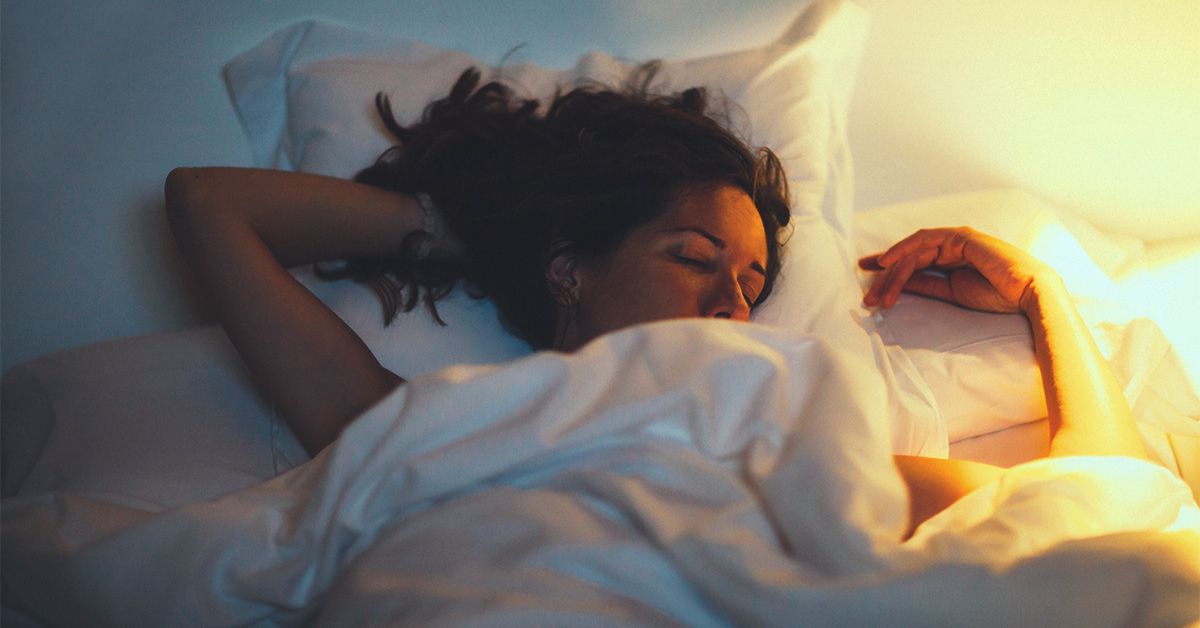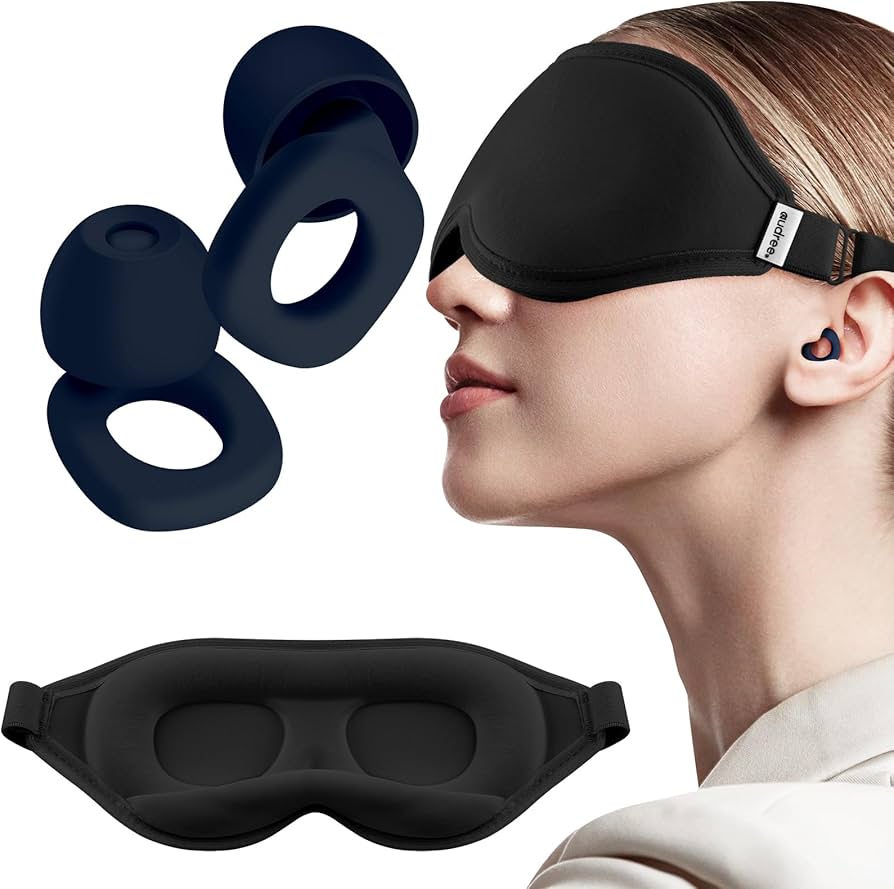Are you tired of tossing and turning because of bright lights or constant noise? You’re not alone.
When your bedroom isn’t perfectly quiet or dark, falling asleep can feel impossible. But what if you could train your mind and body to rest deeply, no matter the distractions around you? You’ll discover how to sleep in light and noise, so you can finally get the peaceful sleep you deserve.
Keep reading, and start waking up refreshed every morning.
Challenges Of Sleeping With Light And Noise
Sleeping with light and noise around is tough for many people. These distractions stop your brain from fully resting. They break your sleep cycles and make you feel tired the next day.
Understanding these challenges helps you find better ways to improve your sleep. Knowing what light and noise do to your rest is the first step.
Impact Of Light On Sleep Quality
Light affects your body’s internal clock. It tells your brain to stay awake or get ready to sleep. Bright light, especially blue light, blocks melatonin. Melatonin is the hormone that helps you fall asleep.
Even small amounts of light can reduce sleep depth. This leads to more waking up during the night. Poor light control causes less restful sleep and daytime tiredness.
Effects Of Noise On Restfulness
Noise interrupts the natural sleep cycle. Sudden or loud sounds cause brief awakenings. These breaks stop you from reaching deep sleep stages. Noise also raises stress levels, making it harder to relax.
Continuous background noise can still disturb sleep quality. It lowers the amount of deep sleep you get. This results in feeling less refreshed after rest.
Common Sources Of Sleep Disruptions
Street traffic, barking dogs, and loud neighbors are frequent noise sources. Indoor sounds like fans, alarms, or electronics also cause problems. Light from street lamps, phones, and TVs adds to sleep issues.
These common disruptions often happen without notice. They quietly reduce the quality of your sleep every night. Recognizing these sources helps in creating a better sleep space.

Credit: www.healthline.com
Creating A Sleep-friendly Environment
Creating a sleep-friendly environment is key to resting well. Light and noise can stop deep sleep. Small changes in your bedroom can help you sleep better. Focus on blocking light and reducing noise for peaceful nights.
Choosing The Right Window Treatments
Dark curtains block outside light effectively. Blackout curtains are best for deep darkness. Thick fabric stops sunlight and street lights. Use blinds or shades for extra light control. Close curtains fully before bed to keep room dark.
Soundproofing Techniques For Bedrooms
Soft materials absorb sound and reduce noise. Add rugs and carpets to floors to dampen sound. Use heavy curtains to block outside noise. Weather-strip doors and windows to stop sound leaks. White noise machines can mask unwanted sounds.
Ideal Bedroom Setup For Deep Sleep
Keep your bedroom cool and quiet. Use a comfortable mattress and pillows. Remove electronic devices that emit light or noise. Arrange furniture to reduce sound reflection. Choose calm colors for walls and bedding to create a relaxing space.
Effective Sleep Aids For Light And Noise
Sleeping well is hard with light and noise around. Many people struggle to rest deeply because of these distractions. Using the right tools can help create a quiet, dark space for sleep. Effective sleep aids block or reduce light and noise. They make it easier to fall asleep and stay asleep.
Using Eye Masks To Block Light
Eye masks cover your eyes completely. They stop light from reaching your eyes. This helps your brain know it’s time to sleep. Eye masks are soft and comfortable. They fit snugly without pressure. Some masks have extra padding to block all light. Using an eye mask can improve sleep quality fast. It works well for people sensitive to light or who sleep during the day.
White Noise Machines And Apps
White noise machines produce a steady, soothing sound. This sound covers other noises that disturb sleep. Many machines offer different sounds like rain, ocean waves, or fan noise. White noise apps on smartphones can do the same job. These sounds help the brain relax and ignore sudden noises. Using white noise keeps the sleep environment calm and quiet. It is useful in noisy homes or cities.
Earplugs: Types And Benefits
Earplugs block out unwanted sounds. They come in foam, silicone, and wax types. Foam earplugs expand in the ear canal and fit tightly. Silicone earplugs mold to the shape of your ear. Wax earplugs are soft and can be shaped easily. Earplugs reduce noise levels significantly. They help people sleep better in noisy places. Using earplugs can prevent waking up from sounds like traffic or snoring.

Credit: www.amazon.com
Lifestyle Changes To Improve Sleep
Changing your daily habits can help you sleep better in light and noise. Small lifestyle shifts make a big difference. These steps calm your mind and prepare your body for rest. Try them to improve your sleep quality without special tools.
Establishing A Consistent Sleep Schedule
Go to bed and wake up at the same time every day. This trains your body to expect sleep at certain hours. Avoid sleeping in late on weekends. A steady routine helps your brain relax and fall asleep faster.
Limiting Exposure To Screens Before Bed
Turn off phones, tablets, and TVs at least one hour before sleep. Screens emit blue light that tricks your brain into staying awake. Replace screen time with reading or quiet activities. This reduces alertness and helps your body wind down.
Relaxation Techniques To Ease Into Sleep
Try deep breathing or gentle stretching before bed. These methods lower stress and slow your heart rate. Listening to soft music or guided meditation also calms your mind. Such habits create a peaceful state that invites sleep.
Behavioral Strategies For Better Rest
Behavioral strategies can improve sleep quality despite light and noise disturbances. These approaches help calm the mind and body. They reduce the impact of external distractions on rest. Practicing certain habits before bed creates a peaceful environment within.
Mindfulness And Meditation Practices
Mindfulness means focusing on the present moment. It helps reduce anxiety and restless thoughts. Meditation trains the brain to relax deeply. Simple mindfulness exercises before bed can quiet the mind. This makes falling asleep easier despite noise or light.
Breathing Exercises For Relaxation
Controlled breathing slows the heart rate and lowers stress. Try breathing in slowly for four seconds, then out for four. Repeat this pattern several times to calm nerves. These exercises prepare your body for restful sleep. They work well in noisy or bright settings.
Managing Stress To Enhance Sleep
Stress triggers brain activity that blocks sleep. Daily stress management helps your mind settle at night. Try journaling or gentle stretching to release tension. Avoid thinking about problems while in bed. Reducing stress improves your chances of deep, uninterrupted rest.
When To Seek Professional Help
Sometimes, sleeping in light and noise is very hard. It affects your health and daily life. Knowing when to ask for help is key. Professional help can guide you through tough sleep problems.
Signs Of Sleep Disorders
Difficulty falling asleep often is a warning sign. Waking up many times during the night shows a problem. Feeling tired all day even after sleep means poor rest. Loud snoring or gasping for air during sleep is serious. These signs may point to a sleep disorder. Don’t ignore them.
Consulting Sleep Specialists
Sleep specialists understand sleep problems well. They use tests to check your sleep patterns. Polysomnography is a common test to study sleep stages. Specialists ask about your sleep habits and environment. Their advice can improve your sleep quality. Early consultation can prevent worse problems.
Treatment Options For Persistent Issues
Treatments depend on the sleep disorder type. Some use devices like CPAP for breathing problems. Others recommend changes in sleep routines and habits. Medicines may help in some cases but need care. Therapy can reduce anxiety or stress affecting sleep. Persistent sleep issues deserve proper treatment for better health.

Credit: www.amazon.com
Frequently Asked Questions
How Can I Block Out Light For Better Sleep?
Use blackout curtains or eye masks to block light. Reducing light signals your brain to produce melatonin. This hormone helps you fall asleep faster and stay asleep longer. Avoid screens before bed to minimize blue light exposure.
What Noise Levels Are Best For Sleeping?
Low, consistent noise like white noise or nature sounds promotes sleep. It masks disruptive sounds and helps your brain relax. Avoid sudden loud noises or silence, which can disturb your sleep cycle.
Are Earplugs Effective For Sleeping In Noise?
Yes, earplugs reduce noise by blocking sound waves. They help maintain deep sleep in noisy environments. Choose comfortable, reusable earplugs for regular use. They are affordable and easy to carry.
Can Sleep Aids Help With Light And Noise Disturbances?
Sleep aids can help temporarily but are not a long-term solution. They may cause dependency or side effects. It’s better to improve your sleep environment and habits first for lasting results.
Conclusion
Sleeping well in light and noise takes small changes. Use curtains or eye masks to block light. Try earplugs or white noise to reduce sound. Keep your room cool and tidy for comfort. Stick to a bedtime routine every night.
These steps help your body relax and rest. Better sleep means better days ahead. Start tonight, and feel the difference soon.
About
Amos Frank is a distinguished figure in the world of Diy sleep, with a decade of expertise creating innovative and sustainable Diy solutions. His professional focus lies in merging traditional sleep with modern manufacturing techniques, fostering sleep that are both practical and environmentally conscious. As the author of diy, Amos Frank into the art and science of sleep-making, inspiring artisans and industry professionals alike.
Education RMIT University
(Melbourne, Australia) Associate Degree in Design (Amos Frank) Focus on sustainable sleep, industry-driven projects, and practical sleep. Gained hands-on experience with traditional and digital manufacturing tools, such as CAD and CNC software.
Nottingham Trent University
(United Kingdom) Bachelor’s in sleepenify.com and sleep makeing (Honors) Specialized in product sleep with a focus on blending creativity with production techniques. Participated in industry projects, working with companies like John Lewis and Vitsoe to gain real-world insights.
Publications and Impact
In diy, Amos Frank his insights on indoor sleep processes, materials, and strategies for efficient production. His writing bridges the gap between artisan knowledge and modern industry needs, making it a must-read for both budding sleep and seasoned professionals.
